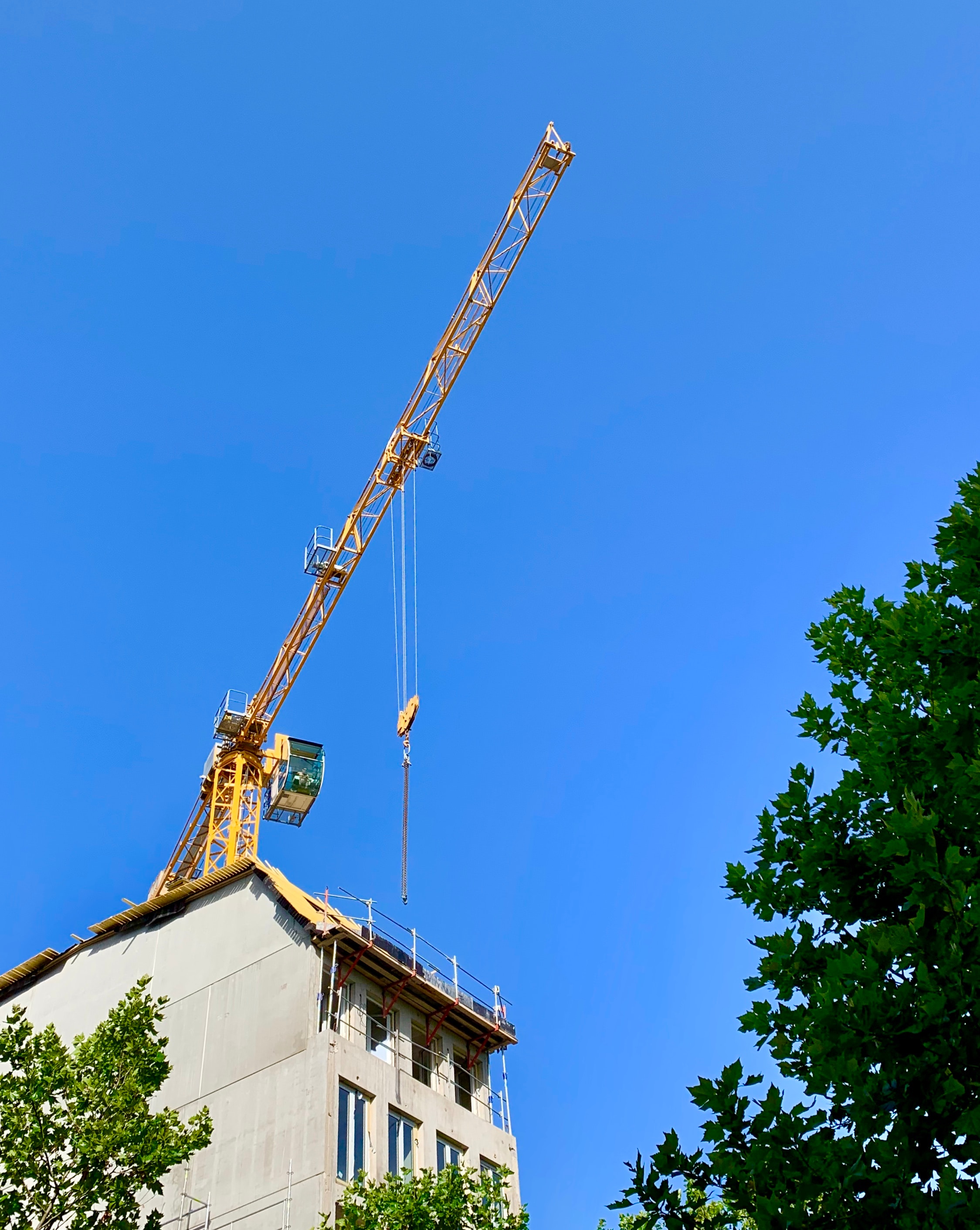GTA has 2,000 possible sites to build new housing: Report
There are as many as 2,000 surplus or underutilized government-owned properties which could be utilized to help ease Toronto’s housing and affordability issues, according to a new report from Ryerson University's Centre for Urban Research and Land Development(CUR).
“We’re recommending that governments should look to see what they have and take advantage of it by doing inventories, which they haven’t done to a great extent,” CUR director David Amborski told RENX.
Amborski said with different agencies, departments and ministries overseeing properties at the municipal, provincial and federal levels, governments might not even be aware of what land could be developed, redeveloped or intensified in Toronto and across Ontario.
The report outlines three options for the properties:
* selling them at market value and using the proceeds as a source of revenue;
* selling them below market value in exchange for the provision of affordable housing units;
* or leasing them to developers and/or non-profit organizations, subject to the agreement that they’ll provide a number of affordable housing units.
“Every single piece of property is essential now that we have this ongoing housing crisis,” said Ben Myers, founder and president of Bullpen Research & Consulting Inc., a boutique real estate advisory firm focused on the residential housing market and new development.
Federal Lands
The former Toronto military base that’s now the 571-acre Downsview Lands project is an example of surplus federal land being used to develop mixed-use communities.
The federal government has created a $200-million fund through its National Housing Strategy which supports the transfer of federal surplus lands to eligible proponents, including non-profit and community organizations as well as provincial and municipal governments.
This land has been designated for eligible affordable rental and ownership housing projects, including mixed-income, supportive and socially inclusive housing.
Program implementation will begin this year.
Provincial lands
In 2017, the Ontario Liberal government released three parcels of land (almost 10 acres in total) through its Affordable Housing Program. The first phase included the West Don Lands and neighbouring properties at 27 Grosvenor St. and 26 Grenville St. in Toronto.
The West Don Lands sites have been allocated to Dream, Tricon and Kilmer Group on a 99-year leasehold basis to ensure the province maintains ownership. Plans are to build 2,000 residential units, 30 per cent of which will be dedicated to affordable housing.
The underutilized sites at 27 Grosvenor and 26 Grenville were sold at below market value to the former Canadian Real Estate Investment Trust (now Choice Properties REIT) and Greenwin Inc. They’ve been rezoned for 844 rental units – of which 257 will be affordable rentals – on just under an acre of land.
In December 2018, the Conservative Ontario government identified 243 pieces of land encompassing 14,600 acres to be sold at market value over a four-year period for the development of housing and long-term care facilities. Stage one kicked off last year, with Infrastructure Ontario listing 14 parcels of land for sale, for a total of 163 acres.
The report said that even if only low-rise developments were built on all 14,600 acres, this could add up to space for a minimum of 300,000 units, not accounting for the space needed for public amenities.
However, the properties being sold at market value lessens the probability that new units will be affordable. Amborski believes these sales represent a lost opportunity to provide below-market value housing.
Municipal lands
CreateTO was established by the City of Toronto on Jan. 1, 2018 to manage its real estate portfolio. By CUR’s estimates, it has some 210 acres of land for sale or lease, 124 of which are already zoned for mixed-use or residential.
CreateTO projects have historically provided a density of between 100 and 200 units per acre, according to the report. This implies potential for 12,400 to 24,800 housing units on the available land. The majority of these properties are being sold at market value, however, with no provision for affordable housing.
Eleven properties (three that were already on the CreateTO list) have been approved by Toronto city council for inclusion as part of the recently approved Housing Now initiative to develop 40,000 affordable housing units over 12 years.
The city plans to develop 10,000 units on the first 11 sites being offered.
These lands will be developed on a leasehold basis in collaboration with the private sector to deliver 30 per cent below-market housing along with market-priced housing.
The program will also speed up the development process with faster approval timelines and exempt fees, such as development charges and building permit fees, to make the project viable.
A Toronto Region Board of Trade report looked at the development potential of 180 parking lots across Toronto. It showed that, by allowing air rights to be used for development, the city could generate more than 10 times the property tax revenue of parking lots.
CUR report recommendations
The report recommends identifying a way for municipalities to weigh the costs and benefits of selling land at market value versus selling the property at below market value in exchange for the provision of affordable housing.
While governments may lose capital gain on the sale of surplus lands at below-market prices, they could also generate affordable housing that could help trim down waiting lists
“If a government feels that it has to provide subsidies for affordable housing, it’s easier to sell land for below cost rather than taking money out of the budget and having a budget expenditure for supporting affordable housing,” said Amborski."
The report also recommends earmarking some of the gains from market value land sales toward affordable housing projects. Amborski said CUR’s research hasn’t yet tracked what’s been done with the proceeds from these sales, but will likely do so in the future.
Amborski said some developers are more willing than others to build affordable housing, even if it’s not as lucrative, in order to build their profiles and demonstrate corporate social responsibility.
Source: Steve McLean

OREA looks to government for answers amid falling homeownership rate
The Ontario Real Estate Association wants all levels of government to act on recommendations outlined in a report, including as-of-right zoning, and lower taxes for young families and first-time buyers.
In a letter to Steve Clark, minister of Municipal Affairs and Housing, OREA President David Reid expressed the association’s concerns about dwindling rates of homeownership in the Ontario:
“The lack of housing supply in Ontario is eroding the next generation’s ability to achieve the Canadian dream. For the first time since Confederation, home ownership rates in Ontario are on the decline. We must take bold action to cut red tape on housing supply and reduce barriers to development so families have more affordable choices in the market.”
Reid also expressed gratitude for the Ontario government’s commitment to increasing housing supply, but also noted that there’s still much work to be done.
“OREA knows that Premier Ford and your Government are committed to action on housing affordability. We look forward to working with you to ensure the Housing Supply Action Plan brings forward the right solutions to increase housing supply and reduce costs for first-time home buyers,” continued the letter.
“Your Government has the ability to reverse the declining rate of home ownership. In fact, OREA believes that Ontario should set a bold target of increasing home ownership rates to 70% by 2025 and 75% by 2040 by implementing policies that will support greater housing supply and housing choice.”
Sage Real Estate Ltd. team lead Christine Cowern says she’s “100% on board with OREA’s recommendations,” but added that development charges—which get passed onto consumers—along with other taxes, are eroding affordability.
The B-20 mortgage stress test, arguably the biggest hurdle to homeownership today, isn’t likely to get repealed, though, and Cowern says that, while it’s too punitive in its present form, it does serve a purpose.
“Unfortunately, I think the chances are very slim that the stress test will be reversed,” she said. “I don't think that getting rid of it entirely is beneficial because it has helped keep rising home prices in check. The best option, in my opinion, is a more middle-of-the-road one: Why not lower the qualifying rate to take into account income growth and the fact that the homeowner's mortgage principal is going down over time? That's more of a win-win, in my opinion."
OREA’s recommendations:
- Implement As-of-Right Zoning
- Reduce New Neighbour Taxes
- Say No to Another Home Owners Tax
- Cut Municipal Red Tape on Secondary Suites
- Lower Taxes for Young Families & First-Time Home Buyers
- Remove the Straitjacket of the “One Size Fits All” Growth Plan
- Speed Up the Planning Approvals Process
- Fix the OSFI Stress Test
- Rebalance Heavy Handed Mortgage Restrictions
- Unlock Surplus Public Lands to Build More
Source: Neil Sharma
RECENT LAND SOLD
GTA
| Address | Acres | Price | BUYER |
| 10-20 Raglan Ave | 0.28 | $11.3MM | Madison Group |
| 89&97 Church St | 0.27 | $73.4MM | Minto Group |
| 1041 Lakeshore Rd E | 0.80 | $7MM | Booth Lakeshore Inc. |
| 39 Pleasant Blvd | 0.17 | $14.6MM | Kingsett Capital |
| 121 St. Patrick St | 0.25 | $9.9MM | Lanterra Developments |
| 315 Spadina Ave | 0.5 | $27MM | 315 Spadina Facility Inc. |
Source: Realnet
*Sold by CFR
THE LAND GROUP
The LDG is a division of CFR that is committed to providing consistent, superior results to clients. The comprehensive services of the LDG include all the expertise of the Brokerage and consulting resources of CFR. This allows us to provide real estate owners, developers and investors focused, specific solutions to execute land acquisitions and dispositions. The LDG also provides the full range of technical services that are required to deliver land development projects. The LDG works as a team to deliver insightful and well-researched development opportunities. Whether our clients are entrepreneurial developers or private/public landowners, we are committed to providing all the necessary services to achieve success.
CFR has quality agents and advisors who have been involved extensively in the purchase and sale of development lands. Not only can we assist in the purchase and sale function, but CFR has the contacts and expertise to participate the whole development process. We have affiliations with planners, architects and other consultants which can assist our clients.
The key members of the Land Group are well tied into the development community. In many cases they have acted on their behalf in consulting situations. This allows the team great access to leading edge information regarding future growth areas, highest and best use, and new paradigms in development densities.
MITCHELL CHANG
President & Owner,
Salesperson
Direct: 416-907-8280
mchang@cfrealty.ca
LORENZO DIGIANFELICE, AACI
Broker of Record, Owner
Direct 416-907-8281
ldigianfelice@cfrealty.ca
JAKE RINGWALD
Salesperson
Direct 416-996-7713
jringwald@cfrealty.ca
ROB LEVINSON
Salesperson, Owner
Direct 416-907-8275
lev@sympatico.ca

